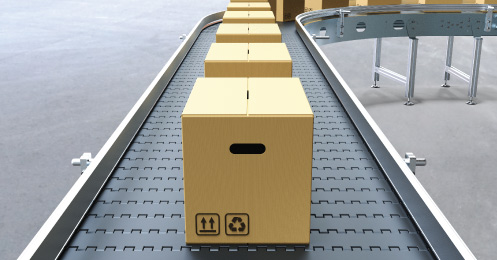Every distribution business handles daily order processing. Whether you call it fulfillment, order management, or another term, it involves receiving an order and sending it to the customer. Regardless of the industry or the metrics used, the efficiency of the workflow is what truly matters. If you're processing orders manually or noticing that orders remain incomplete by the end of the day, it's time to identify the underlying issues.
What is Order Processing?
Order processing involves numerous tasks, requiring the collaboration of multiple departments—sales, warehouse, shipping, finance, and customer service—and the use of technology to streamline and automate workflow steps. This begins when the order is placed and continues until the product reaches the customer and payment is finalized. Tasks include receiving the order, picking, packing, shipping, and invoicing the customer, with many behind-the-scenes activities ensuring everything runs smoothly. Key aspects also include inventory and warehouse management.
Workflow for Processing Orders
Placing the order
The customer selects products either from a product catalog, online order portal or eCommerce website. The customer typically provides necessary information such as shipping address, payment method and special instructions – this information may already be known by the distribution business if this is a repeat customer.
Once an order is submitted, the customer receives an order confirming the receipt either by phone or through email along with a unique order number.
At this stage, the order status is set to ‘New’.
Receiving the order
Once a customer notifies the business of the intent to purchase, the distributor’s software system, will check if the products are available in the warehouse. If items are out of stock, backorder or replenishment processes are initiated.
The order status is set to ‘Processing’.
Pick, Pack & Ship
A pick slip is generated and warehouse staff heads into the warehouse to pick the items associated to the order. Each item is checked against the pick slip to ensure accuracy.
Picked items are sent to a designated packing area and a packing slip is generated. Products are packed securely in the appropriate packaging materials, typically a cardboard box along with the packing slip that outlines product information.
Based on order specifications and customer requests, the shipping department selects the appropriate carrier and prints shipping labels to be affixed to the package. The courier is notified (or arrives at the same time each day/week) to pick up the package and deliver it to the customer.
The order status is set to ‘Shipped’.
Invoicing
Once the package is handed off to the courier, an invoice is generated that details the products, quantities, all taxes and fees, and the total amount due. The invoice is sent to the customer and payment is to be collected.
By following these steps, businesses can ensure a streamlined order processing workflow. In order to enable an efficient order processing workflow, distributors can implement ERP (enterprise resource planning) software to enhance and automate these steps leading to improved accuracy, reduced costs, and enhanced customer satisfaction.
Before we get into the benefits of an ERP software systems, let’s look at a manual approach.
Manually Processing Orders
The main culprit behind slow order processing times is often a manual approach. Instead of inputting sales orders directly into software, Customer Service Representatives (CSRs) often resort to writing the orders down on paper or using other makeshift methods. This inefficiency raises several questions:
- Do different customers have different prices for the same product?
- How does the CSR know what is available to sell?
If you're still processing orders manually, you’re likely spending twice as long as necessary and wasting significant resources. Manual processes mean constant lookups for customer-specific pricing and uncertain inventory status, leading to inefficiencies and errors.
Common Issues with Manual Processing:
- Calling customers back due to out-of-stock products.
- Shipping delays without informing customers.
- Inaccurate pricing on customer invoices.
Costs Associated with Processing Orders
The costs associated with processing orders can be significant and vary depending on the complexity and scale of the operation. Here are some common costs:
Direct Costs
Labor Costs: Staff is required to input order, pick and pack the orders and shipping required costs associated with packaging materials. There are also costs associated with training new/seasonal employees.
Shipping Costs: The business must pay couriers who are delivering order or pay delivery drivers if they have their own in-house delivery team.
Indirect Costs
Technology Costs: Some kind of software system is likely already in place to assist with managing orders. On the lower end, it could be just Excel spreadsheets, on the higher end it could be a full ERP system that includes inventory and warehouse management components.
Infrastructure Costs: Warehouse space and Utilities are necessary to run any distribution business.
Variable Costs
Transaction Fees: Payment processing such as credit card fees are typically charged if you accept payment through credit cards. In some cases, this costs I passed onto the customer.
Inventory Holding Costs: Storage and insurance for warehoused items are ensures inventory is available when ordered and insured in case of theft, damage or loss.
Landed Costs: If products are imported into the country in which the business operates, the business must pay landed costs which can include wharfage, duties, freight etc. This is another cost that is typically passed to the customer although it can be difficult to calculate without an automated system.
Other Costs
Compliance Costs: Some industries face unavoidable industry regulations that must be adhered to in order to operate. This can include Pharmaceuticals, Food & Beverage and medical products.
Ways to Improve Order Processing
As mentioned, processing orders involves many moving parts, including people and technologies. While small businesses can manage with one or two people, growth necessitates increased efficiency. Here are some key areas to focus on:
Warehouse Layout Management: An optimized warehouse speeds up order picking and processing. Store frequently picked items lower on shelves or organize shelves with even numbers on one side and odd numbers on the other. This setup helps train seasonal employees and manage increased orders during peak seasons without overwhelming staff.
Inventory Management: Tracking inventory levels helps manage dead stock and ensures products are available when ordered. Demand and sales forecasting assist warehouse and inventory managers in planning inventory levels to meet demand and keep customers happy.
DOWNLOAD: Inventory Best Practices
Contact Management: Maintaining an organized and updated database of suppliers and customers facilitates efficient communication across departments. Using an ERP system ensures that notes entered by one user are accessible to all, and the ability to lookup previous orders and special requests is easy, providing a seamless customer experience.
Mobile Scanning: Mobile scanning applications reduce errors and speed up order picking. They provide real-time inventory information to the picker, enhancing accuracy and efficiency.
Consolidated Picking: This method groups multiple orders together for a single pick, reducing the number of trips needed and saving time.
ERP/Order Processing Software:
Automation: Automating repetitive tasks, such as sending packing slips or invoices when the order status changes, saves time and money.
Shipping Integration: An ERP system can integrate with most couriers, allowing shipping labels to be printed in-house from one screen, saving time spent on couriers' websites.
By focusing on these areas, businesses can increase their order processing efficiency as they grow.
The Solution: Inventory Management and ERP Software Systems
With a good Inventory Management or ERP Software system, processing orders becomes exponentially more efficient.
Key Benefits of Automated Order Processing:
- Efficiency: Process orders in a fraction of the time.
- Accuracy: Automatically populate customer-specific prices, update inventory levels.
- Real-Time Inventory: Know what’s available in your inventory instantly.
- Customer Insights: Quickly access previous customer purchases.
Conclusion
Inefficient order processing drains time and money. Implementing ERP software can revolutionize your operations, making order processing quicker and more accurate. This not only saves on labor costs but also enhances customer satisfaction.
Isn't it time to streamline your order processing? Discover how our ERP solutions can transform your business operations. Contact Us - Blue Link ERP










